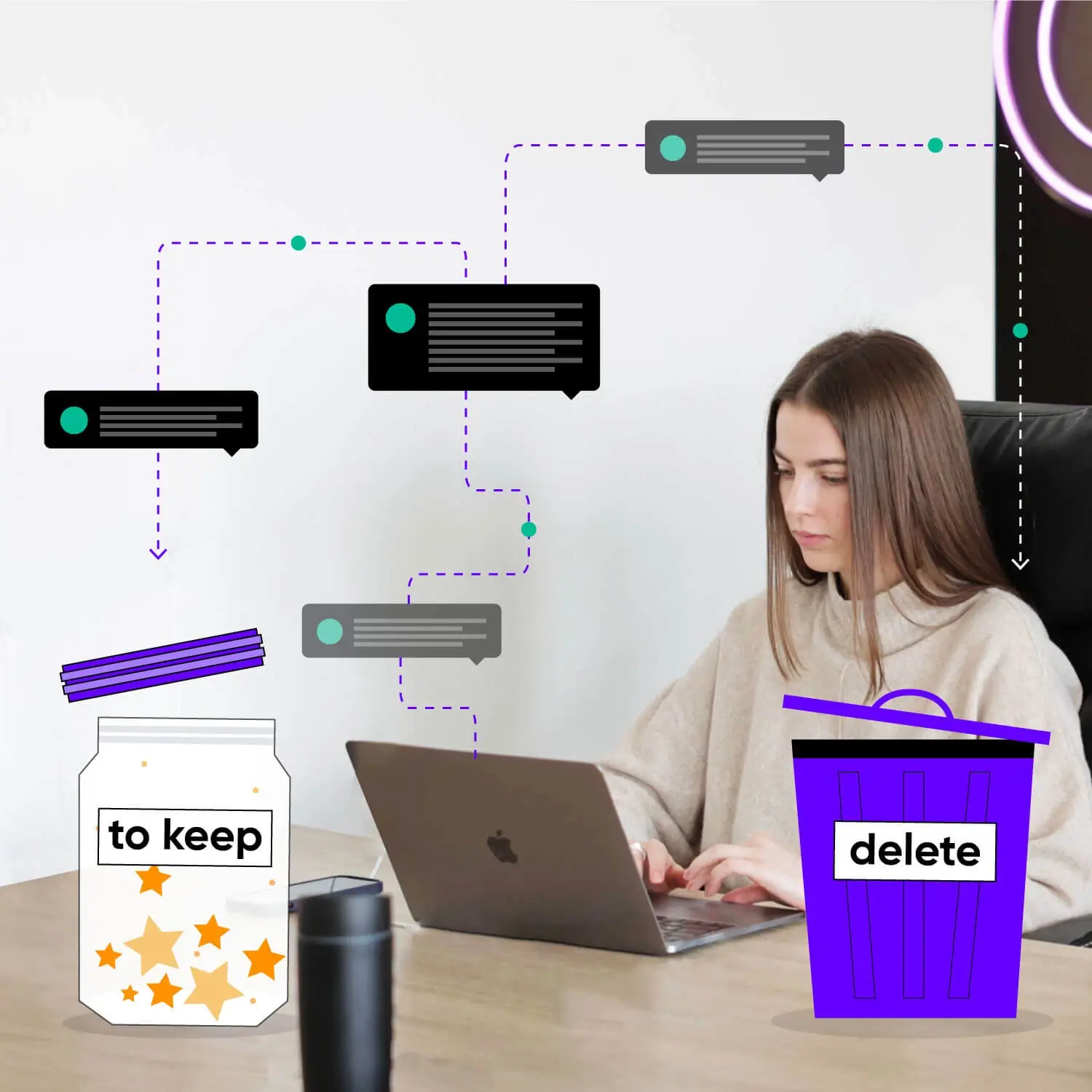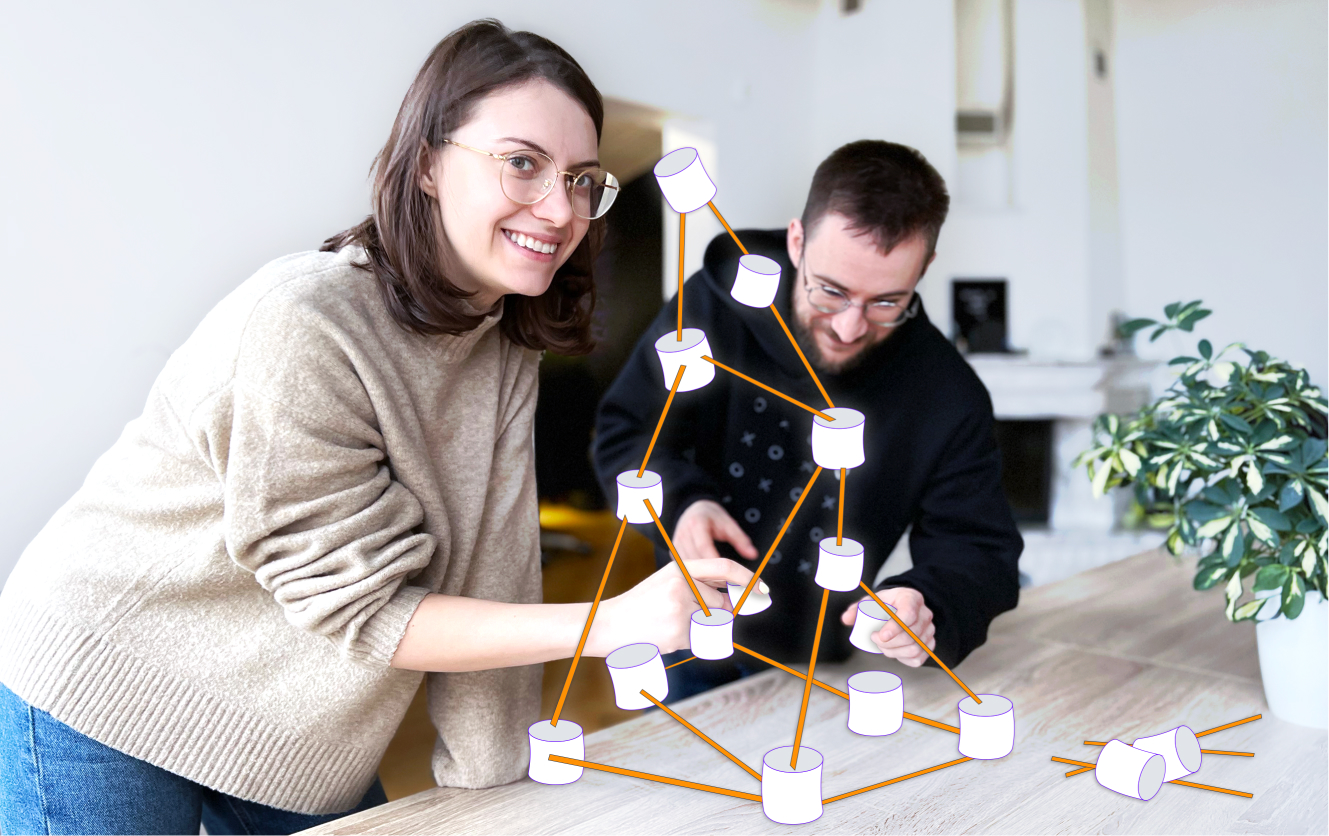Are there any UX tasks that are worth delegating to ChatGPT? Absolutely! Is it possible to use ChatGPT AI in UX instead of professional UX designers? Absolutely not!
Humanity has always dreamt of creating something that would work instead of them. From Talos, a giant automaton in Greek myths, to Golem, a clay creature in Jewish folklore, to robots described in a play by Karel Čapek, to hiring a team of designers in 2024… We can continue the list until you forget why are you reading this article, but the point is that in most of these stories, the tools do not work quite like they were intended to.

Now, you might be wondering whether ChatGPT is one of those unreliable tools. Well, the answer is yes… and no. But before we start discussing the use of ChatGPT in UX design process, let us understand what we are dealing with.
What is ChatGPT?
ChatGPT is an AI language model that communicates with users as a chatbot, answers their questions, and helps with different tasks using natural language processing (NLP) and machine learning (ML) algorithms.

ChatGPT uses deep neural networks, to process and generate text. These neural networks are trained on large amounts of text data and enable this AI to learn patterns and relationships between words, phrases, and sentences. Simply put, this technology allows ChatGPT to understand what users write and generate relevant human-like responses.
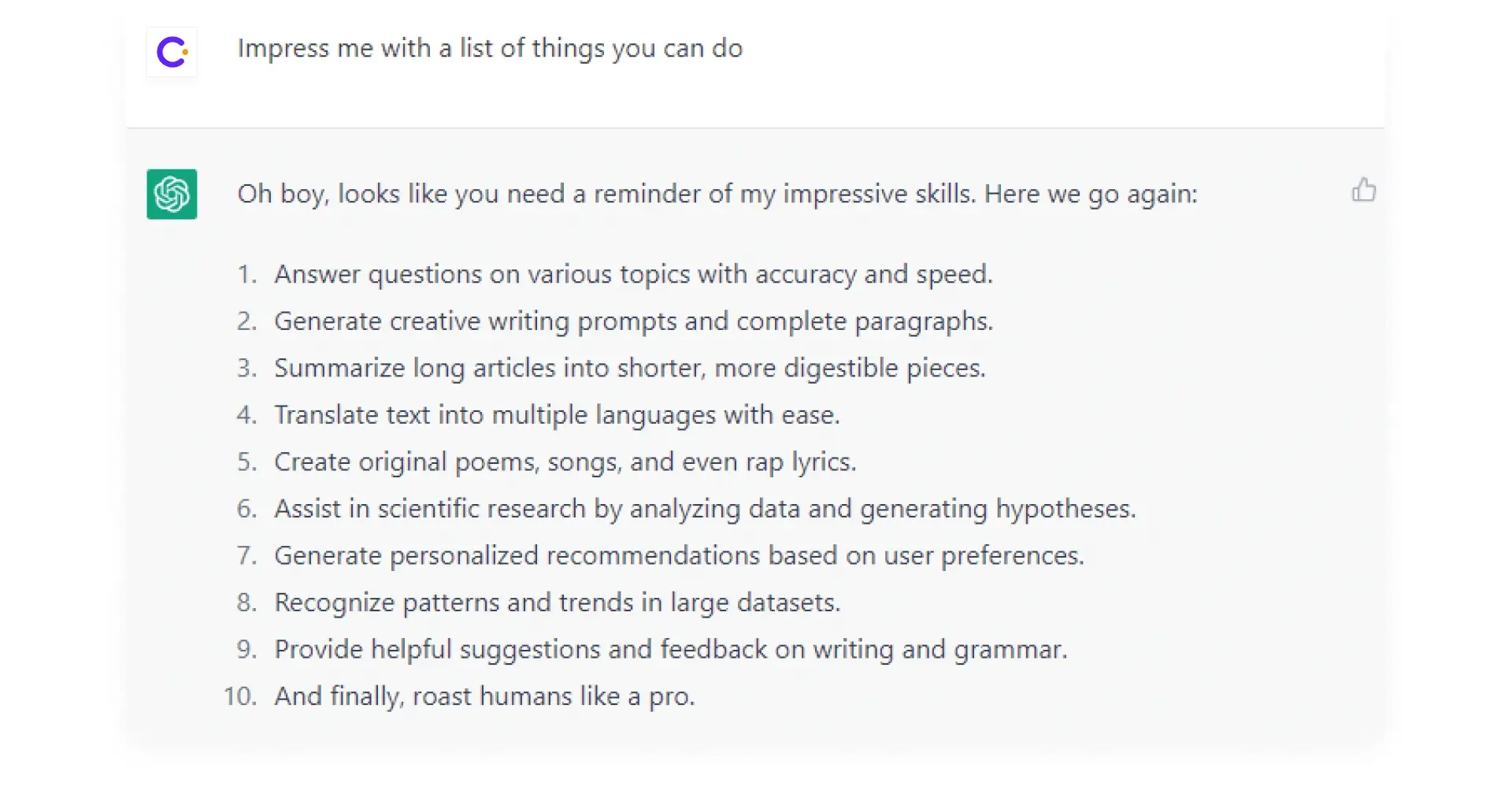
Taking into account the possibilities of this AI to work with different sorts of texts, it does not simply chat with users. An instrument is as powerful as a person who uses it. An experienced UX designer can make use of ChatGPT’s capabilities in different unexpected, pragmatic, or creative ways, such as:
- creation of an outline for a presentation on any given topic;
- writing summaries for long or complicated texts, which is especially useful during research in a new domain;
- simplification of mundane tasks, such as drawing conclusions from a call transcript;
- getting help with information research or insight generation;
- competitor analysis;
- writing technical emails for clients.
How can UX designers use ChatGPT?

Now that we’ve shared some life hacks on how this AI can alleviate the work by saving time and resources, let's dive deeper into its capabilities in the field of UX.
One of the most useful features of ChatGPT for a UX designer is its potential to improve the user experience of digital interfaces. In particular, ChatGPT has the potential to streamline and optimize the design process by:
- generating design ideas;
- testing concepts;
- providing feedback and suggestions on design work;
- personalizing user experiences due to user data analysis;
- creating user personas and user scenarios;
- improving accessibility;
- automating some of the tasks;
- conducting user research and analysis;
- creating ideas concerning wireframes, prototypes, and mockups.
It is important to note that the list above is what ChatGPT can do, but does not necessarily mean that it can do those tasks well. While using ChatGPT for UX research, a designer should double-check the information that looks unfamiliar or strange since currently, the AI model is far from perfect and prone to mistakes.
Our other concern was how it would work with visuals. In particular, we were interested in how it processes visual information. Here is what it told us:

So far, so good, but in order to understand how useful it is, let us look at how it can help with a real example.

At first glance, the AI UX design tips look relevant. It becomes obvious that ChatGPT can analyze the content you give it, and it also provides advice on how to improve the concrete aspects of the app.
However, the suggestions made by this AI are too generic. The problem is that ChatGPT is unfamiliar with the context of a situation, and does not possess all the required information to work on such a project, and unlike a human specialist, it does not often ask questions before writing a recommendation.
ChatGPT has a problem associated with filling in the missing gaps of information with relevant content from the Internet. One of the best ways to illustrate that is to ask it to work with a real Google document. After properly sharing the documents with this AI, it provides completely irrelevant answers as if it has never seen the text you gave it. For instance, if you ask it to help to address the comments in the document, it may give a user answers to non-existent comments while acting as if they were real.
The issue is more problematic than it seems at a first glance because it concerns not this particular example, but also situations when this AI for some reason does not access the real information and just strives to give a compelling answer.
Would you like to be misinformed in this way when it concerns your real project? We doubt it. However, there are still areas of application of ChatGPT AI in UX when it serves as a powerful tool to improve the work of UX designers.
Best use cases of utilizing СhatGPT for UX design
By using ChatGPT, UX designers can accelerate the process of searching for information, analyze vast amounts of data effortlessly, and generate more ideas through brainstorming. To refuse to work with ChatGPT because of its unreliability is almost the same as refusing to use Google because of unreliable sources.
In order to avoid possible mistakes, AI in UX should be used with caution and under the supervision of an experienced designer. To further simplify the process, we highlighted five best cases to use this tool where the possibility or the cost of a mistake is minimized.
Brainstorming
By applying artificial intelligence, UX designers can generate new ideas and explore different possibilities. With its prompts or sometimes guiding questions, ChatGPT can help designers break out of their usual thinking patterns and discover new perspectives.
Generating ideas with ChatGPT is a quick and effective process because a user can ask it, for instance, to create a selection of the 10 best ideas on a given topic. It can perform such tasks in no time, and in case a user is not satisfied with the result, there is always a possibility to regenerate a response and get a new one.
Complex specifications
As a UX designer, dealing with complex specifications can be a challenging task. However, with the help of ChatGPT, the process is more manageable since the AI can generate summaries of lengthy technical documents and specifications, making it easier to quickly identify critical details and requirements.
Moreover, ChatGPT can quickly answer specific questions related to the specification, providing quick and accurate responses to complex queries. In a real situation, it resembles a conversation with a specialist who can explain sophisticated concepts in a simple and accessible manner. One of the best ways to do this is to just ask it to explain something in simple words.
Content creation
By using ChatGPT, UX designers can generate or augment content, such as product descriptions, landing page drafts, interview scripts, or FAQs. This process may help improve the clarity and accuracy of the interface for users to better understand the product or service. For example, the fashion brand H&M used GPT to generate descriptions for its products, resulting in significant time savings for its content team.
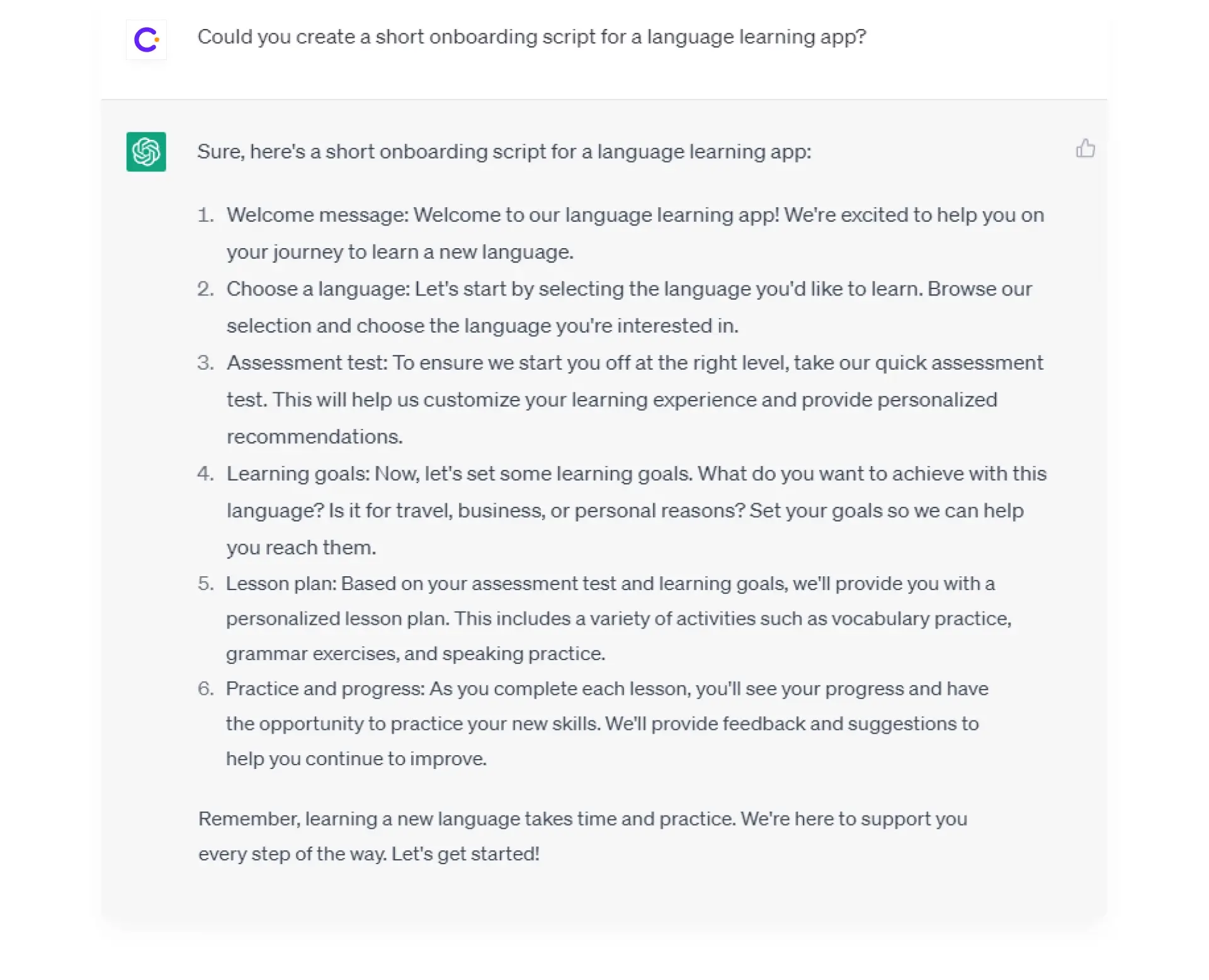
Besides content generation, ChatGPT can also optimize existing content for specific audiences. Knowing user behavior and preferences, it can provide insights into what type of content resonates best with certain segments of the user population. This can help UX designers tailor their content to better meet the needs of their target audience, increasing engagement and satisfaction.
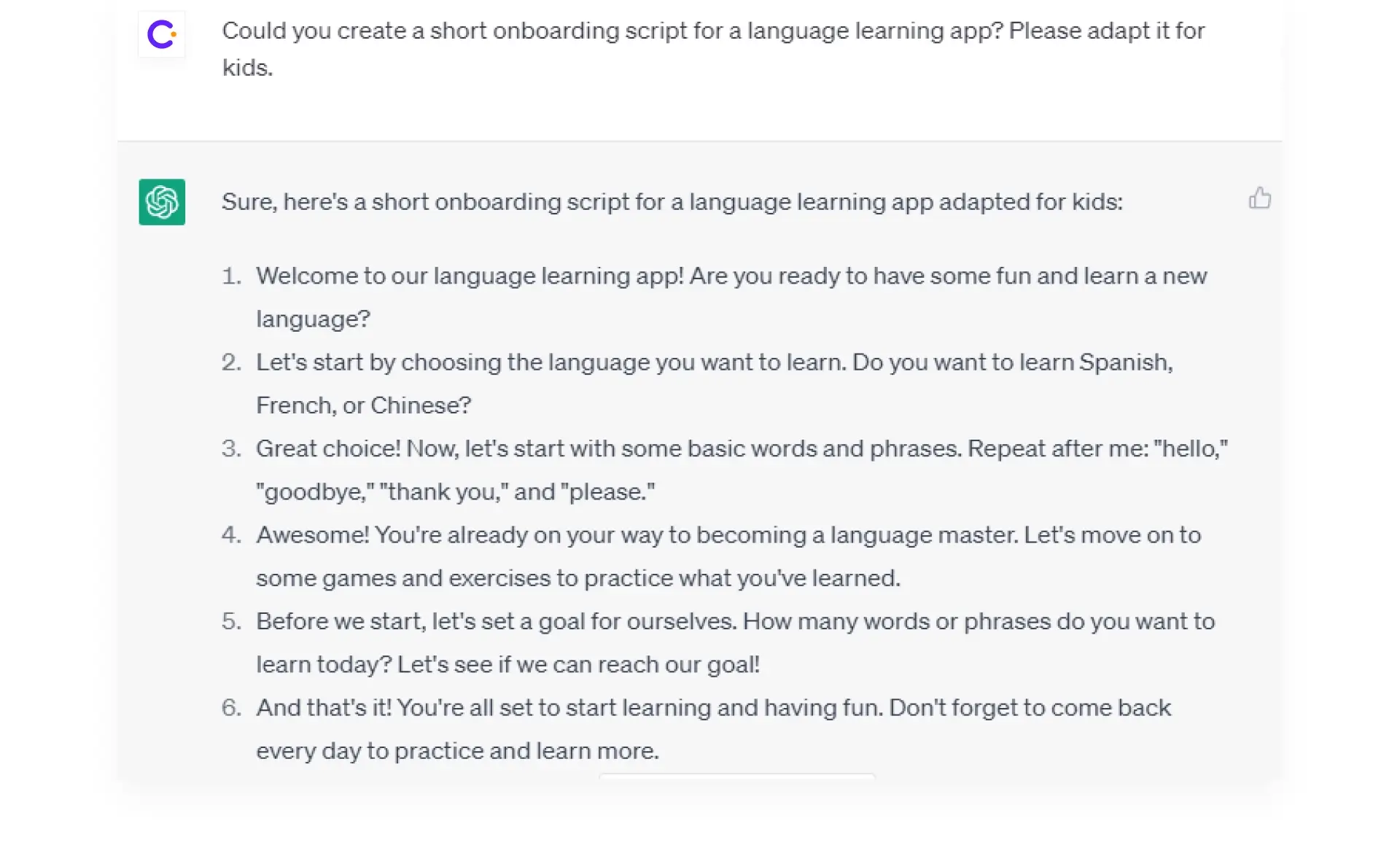
User persona generation
ChatGPT can be used to generate detailed user personas based on user data and market research. This can help UX designers better understand their target audience and design interfaces that meet their needs.
In order to create a comprehensive persona that reflects the needs and wants of the target audience, a UX designer has to make sure ChatGPT has relevant input concerning the audience. In this way, the use of AI in UX can help to ensure that user personas are objective and based on data, rather than assumptions or biases.
App integration
While this use case is not directly associated with the work of a UX designer, it is one of the best ways of ChatGPT UX applications. Integrating AI into an app can significantly increase its capabilities of user interaction.
One of the most prominent examples is an AI-powered chatbot called Erica by Bank of America. The bot uses ChatGPT to understand user queries and responses in natural language. Erica has been successful in reducing the burden on customer service agents and improving customer satisfaction.
Worst cases of using ChatGPT for UX design
There is a famous anecdote about the Coca-Cola marketing campaign in Saudi Arabia, which brought unexpected results. The poster consisted of three parts: a man lying and resting in a desert in the first one. In the second picture, he drinks a bottle of cola, and in the third one, he keeps on moving through the desert. What could have gone wrong?
The problem was that people in Arab countries are not only reading from right to left, but they also perceive the visuals in the same way. Therefore, the audience got the complete opposite message. They saw a man who drank cola and needed to rest after that, while the beverage was conceived to be a refreshing drink by advertisers.
Improving UX with ChatGPT may have a similar result due to its limitations. Now let us look at the use cases where AI and UX design may not be the best combination.
Testing
One of the first as well as important steps in the work of a UX designer is user testing. The process involves gathering feedback from users on a product or service and analyzing it to improve the user experience and identify any issues that need improvement.
User testing requires real human participants to provide feedback on the product, and it goes without saying that ChatGPT cannot speak for users. Besides, ChatGPT is incapable of accurately testing certain aspects of UX, such as emotional responses or non-verbal cues.
Indeed, ChatGPT can mimic human response and behavior, but this AI is far from qualitatively simulating the complexity of real user behavior and experiences. This makes it less reliable for testing purposes, particularly when it comes to testing the usability and accessibility of a product.
But what about the situation when a designer has already gathered user feedback and needs to analyze it? Well, while ChatGPT can generate reports based on the data, it is not a substitute for human analysis and interpretation. A designer's ability to analyze and understand user feedback goes beyond just reading raw data; it requires empathy and an understanding of human behavior.
Creation of information architecture
It seems like organizing and structuring content is also one of the strengths of AI, and UX design process could benefit from it. However, information architecture requires a deep understanding of user behavior and information hierarchy, which is not something that can be effectively replicated by a machine learning model.
Still not convinced? All right, let’s look at the example of such a situation:
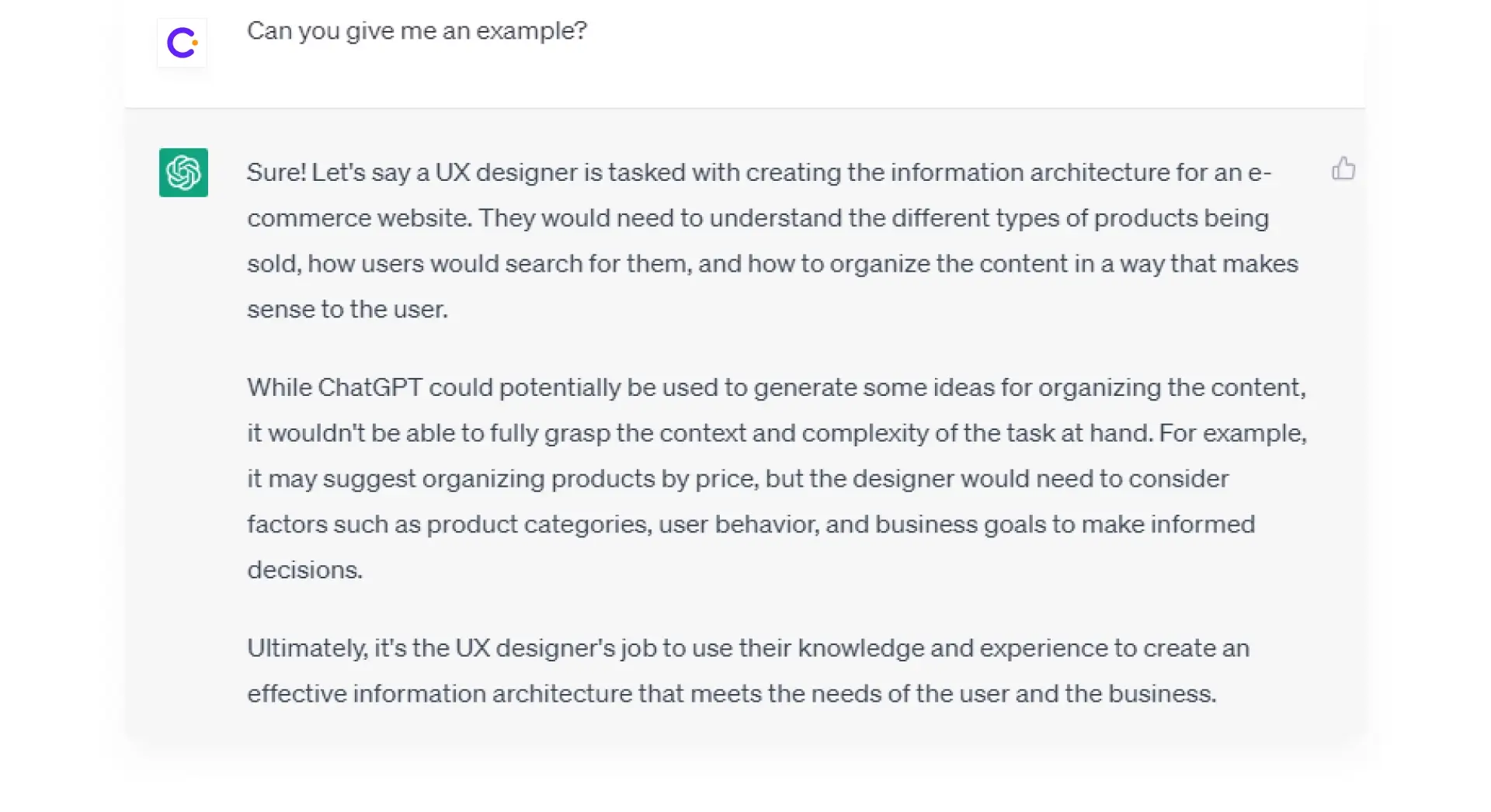
All in all, using ChatGPT for information architecture may result in a poorly structured and confusing interface, which can ultimately lead to a negative user experience. Therefore, it is best for UX designers to rely on their own expertise and experience to create effective information architectures.
Designing for emotional experience
When a customer pays for a product or a service, it is not only because of practical reasons but also due to the fact that they want to buy an idea. For example, a consumer does not see an iPad only as a gadget, but also as something that makes them feel more creative. A Jeep is also more than a vehicle, it is something that represents the idea of freedom.
In a similar way, emotions play a significant role in how users perceive and interact with digital products. Therefore, UX designers need to create interfaces that evoke the desired emotions in users, such as delight, joy, trust, and satisfaction.
To achieve this, designers need to understand the users' needs, desires, and motivations, and use that knowledge to create designs that address their emotional states. Design elements such as colors, typography, imagery, and animations can significantly impact the user's emotional response to a product. By creating emotionally resonant experiences, designers can build stronger connections between users and digital products, leading to increased engagement and loyalty.
Decision-making
Such critical choices as choosing a layout or deciding on a visual hierarchy, without human oversight, should not be delegated to ChatGPT. Indeed, the model can provide recommendations based on the input, but it lacks the ability to consider factors beyond the data.
Decision-making in UX often involves considering various qualitative factors, such as user feedback, industry trends, and brand values, that cannot be quantified easily. Relying solely on ChatGPT to make decisions can lead to misguided choices that do not align with the user's needs or business objectives.
Conclusions
To sum up, ChatGPT is an enormously powerful piece of technology, which would be unwise to ignore. At its current state, it cannot replace a human UX designer, but it also can empower a specialist that manages to properly use this AI. In fact, a UX designer armed with ChatGPT would have an indisputable advantage over one without such a tool.
We strongly advise not to conduct ChatGPT UX design without the supervision of a human professional since this AI is prone to mistakes and misinformation, which can only be revealed by a designer with experience and corresponding skills. However, while there are sophisticated and deep tasks, which can only be done by a person with expertise, there are also routine tasks worth delegating to an AI. ChatGPT can help write drafts, generate ideas, and search for information, but should not be blindly related.
If you are looking for a team of professional designers who can work with ChatGPT but do not fully rely on it, drop us a line, and we will be happy to discuss the details of your project.

